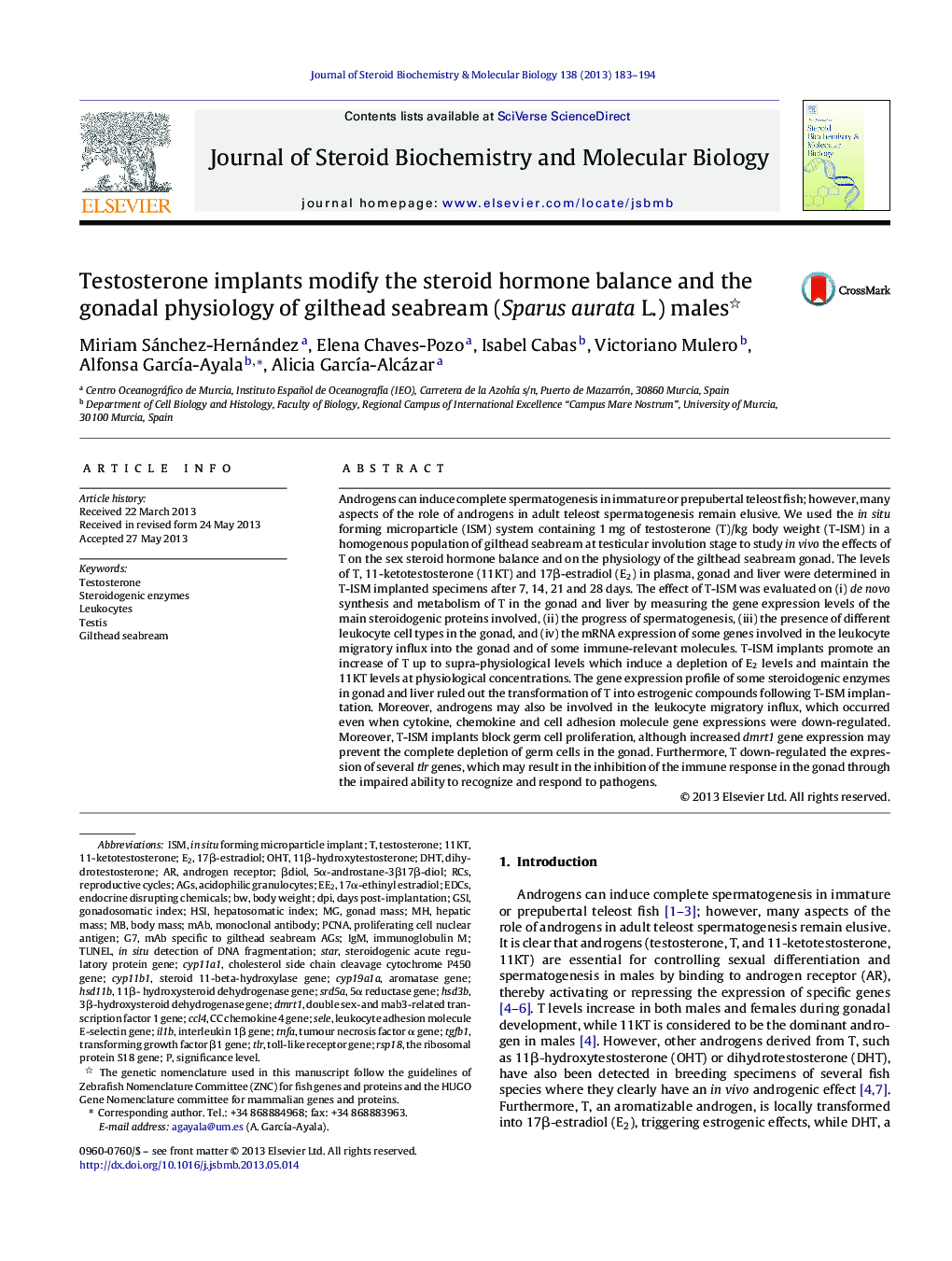| Article ID | Journal | Published Year | Pages | File Type |
|---|---|---|---|---|
| 8338951 | The Journal of Steroid Biochemistry and Molecular Biology | 2013 | 12 Pages |
Abstract
Androgens can induce complete spermatogenesis in immature or prepubertal teleost fish; however, many aspects of the role of androgens in adult teleost spermatogenesis remain elusive. We used the in situ forming microparticle (ISM) system containing 1 mg of testosterone (T)/kg body weight (T-ISM) in a homogenous population of gilthead seabream at testicular involution stage to study in vivo the effects of T on the sex steroid hormone balance and on the physiology of the gilthead seabream gonad. The levels of T, 11-ketotestosterone (11KT) and 17β-estradiol (E2) in plasma, gonad and liver were determined in T-ISM implanted specimens after 7, 14, 21 and 28 days. The effect of T-ISM was evaluated on (i) de novo synthesis and metabolism of T in the gonad and liver by measuring the gene expression levels of the main steroidogenic proteins involved, (ii) the progress of spermatogenesis, (iii) the presence of different leukocyte cell types in the gonad, and (iv) the mRNA expression of some genes involved in the leukocyte migratory influx into the gonad and of some immune-relevant molecules. T-ISM implants promote an increase of T up to supra-physiological levels which induce a depletion of E2 levels and maintain the 11KT levels at physiological concentrations. The gene expression profile of some steroidogenic enzymes in gonad and liver ruled out the transformation of T into estrogenic compounds following T-ISM implantation. Moreover, androgens may also be involved in the leukocyte migratory influx, which occurred even when cytokine, chemokine and cell adhesion molecule gene expressions were down-regulated. Moreover, T-ISM implants block germ cell proliferation, although increased dmrt1 gene expression may prevent the complete depletion of germ cells in the gonad. Furthermore, T down-regulated the expression of several tlr genes, which may result in the inhibition of the immune response in the gonad through the impaired ability to recognize and respond to pathogens.
Keywords
HSIDMRT1TGFB1IL1bRCSCYP11B1DPITLRTNFaSELEEE2CCl4ISMCYP11A1AGS17α-ethinyl estradiolCyp19a1aaromatase geneHsd3bmAbGSIDHTPCNAIgM11KT11-ketotestosterone17β-estradiolEDCsMonoclonal antibodyProliferating Cell Nuclear AntigenSteroidogenic enzymesimmunoglobulin MTestistestosteroneTUNELBody massGilthead seabreamOHTDihydrotestosteroneStarSignificance levelHepatosomatic indexgonadosomatic indexLeukocytesEndocrine Disrupting Chemicalsbody weightReproductive cyclesacidophilic granulocytesAndrogen Receptor
Related Topics
Life Sciences
Biochemistry, Genetics and Molecular Biology
Biochemistry
Authors
Miriam Sánchez-Hernández, Elena Chaves-Pozo, Isabel Cabas, Victoriano Mulero, Alfonsa GarcÃa-Ayala, Alicia GarcÃa-Alcázar,
